Native to Asia, the Aglaonema commutatum is a decorative houseplant, popularly known as the Chinese Evergreen and thought to be the bearer of good luck.
It was brought to the West in 1885 and now rate among the most popular houseplants sold. The Chinese Evergreen grows naturally in rain forests close to the ground, so it will need indirect light as opposed to direct full sun.
This herbaceous perennial boasts beautiful large, oval foliage on short stems that do wonders for indoor decor. It is a very popular houseplant with many variations in patterns and colors that range from silver to yellow, pink, dark green to red.
- Related article: Lists of Houseplants
Let’s get into how to care for and grow the Chinese Evergreen plant.
Chinese Evergreen Overview
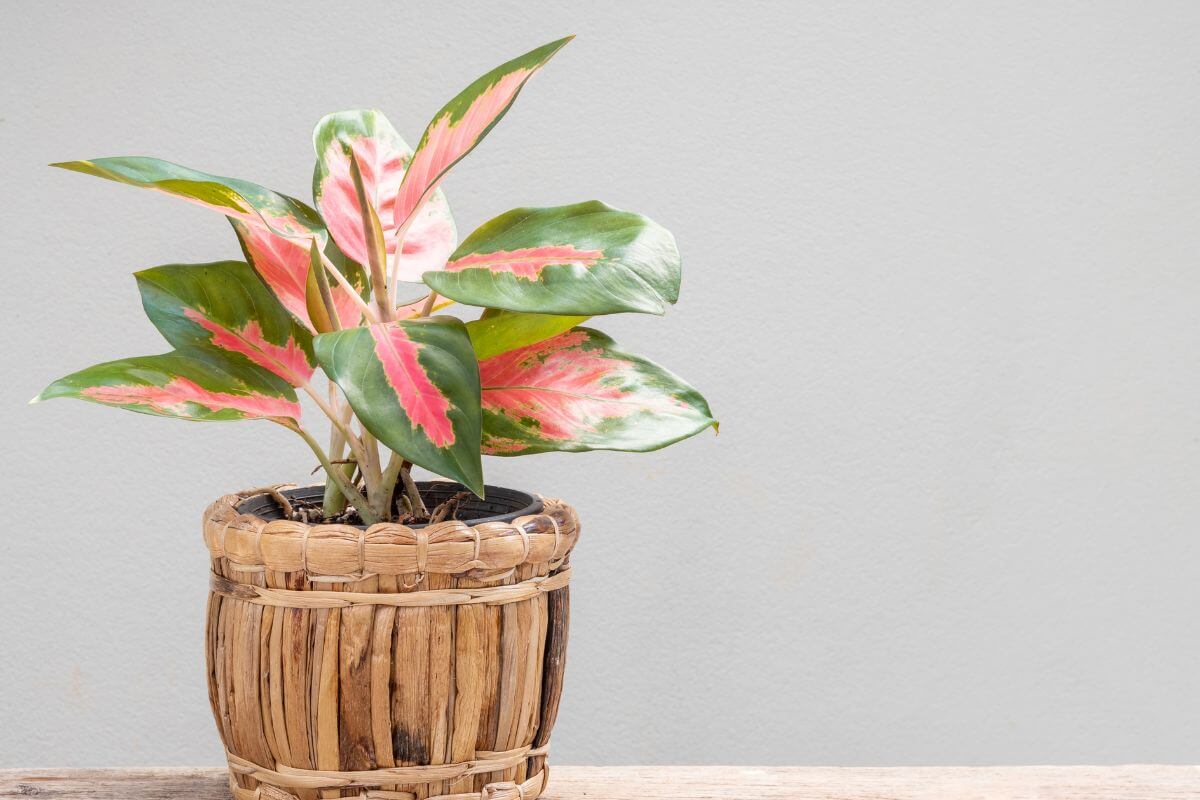
The Chinese Evergreen has been around for thousands of years, but it was not until the late 1800s when this species began to gain popularity in Europe and North America. The plant is also known by many other names including Japanese holly, Christmas cactus, and winterberry.
Originating in the Asian tropics and subtropics, the Chinese Evergreen can grow to three feet in height. It is the ideal indoor plant for tables, desks, and credenzas, and they look great in offices too.
The Chinese Evergreen is a slow grower. These plants can be cultivated all year round indoors and are particularly appreciative of full indirect sunlight, so if you have a nearby window, this plant will thrive.
There are approximately two dozen species of aglaonema featuring a diversity of leaf colors and patterns. Due to their popularity, there are many cultivars and hybrids now available.
Among the most popular varieties you can find:
- Aglaonema modestum features green leaves that are striated with white sprouting from light green stems.
- Aglaonema nitidum has dark green leaves and is very low-light tolerant.
- Aglaonema widuri, also called Red Peacock, boasts green leaves with pink veins and literally bursts with color.
- Aglaonema “Emerald Bay” has dark green leaves mixed with silver gray-green.
- Aglaonema “Harlequin” features green and yellow leaves with pink veins.
- Aglaonema “Silver Queen” is the most common and popular of Chinese Evergreens, often being referred to as the gold standard for these plants. The patterns on its foliage are cream on a dark green background.
- Aglaonema “Red Gold” is a beautiful version of the Chinese Evergreen that grows well indoors and outdoors with sufficient shade. Bright green leaves are rimmed in brilliant red.
The Chinese Evergreen is also listed by NASA as a natural air purifier. It is part of what NASA refers to as “nature’s life support system.”
As we tend to spend more time indoors, it’s important to have houseplants that help to purify the air. Organic pollutants levels run two to five times more indoors than outdoors.
Houseplants contribute to improving the quality of indoor air by removing toxins. They also can help to stabilize humidity indoors.
Some top air-purifying plants include the Sensivieria (snake plant), Anthuriums, Syngonium, and of course the Aglaonema, aka Chinese Evergreen. They all absorb toxins and release oxygen.
Chinese Evergreen Plant Care
This is a stunning, yet easy to care for plant. The only thing you want to keep an eye on are the light conditions. If your plant leaves have variegation that is lighter in tint, your plant will need more bright light.
Soil for the Chinese Evergreen
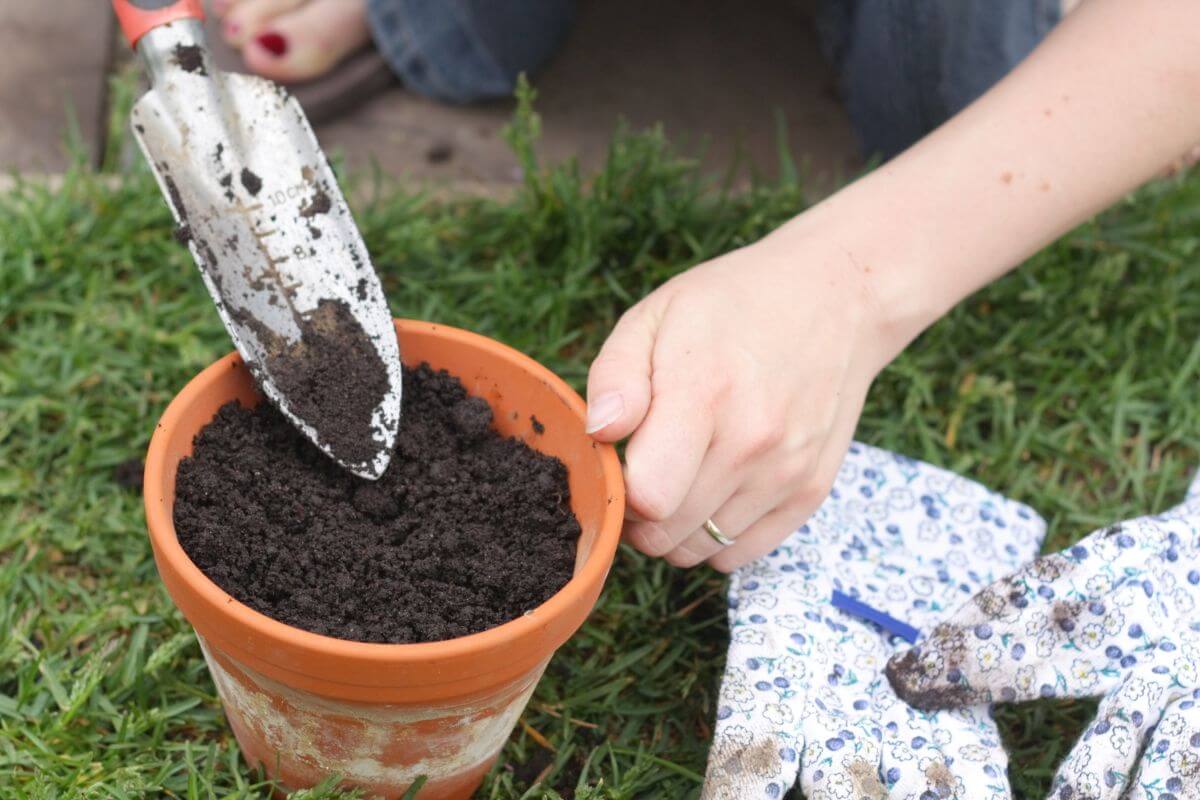
The Chinese Evergreen needs a well-draining potting soil that has a slightly acidic pH in the 5.6 to 6.5 range.
Keep the soil moist and be sure that your pot has drainage holes, so it’s not retaining water. If you note that the soil bed has difficulty draining, add in some perlite or sand to your potting mix to help.
Light for the Chinese Evergreen
Depending on the variety of Chinese Evergreen that you have, this will influence the amount of light your plant needs.
The dark green varieties do well in partial shade, while varieties that are variegated require more sunlight.
No Chinese Evergreen should be exposed to direct sunlight, as this will cause the leaves to scorch. They can thrive in a medium to a low-light environment.
If you want to grow them indoors in an office, they also grow well under fluorescent lighting.
Water and Humidity for the Chinese Evergreen
The Chinese Evergreen loves moisture in its soil bed, but not water-logged or soggy. Be careful of overwatering or underwatering.
You can water your plant well, allowing excess water to drain out. Then wait for the soil bed to dry out before watering it again.
Regular watering is necessary in the spring, summer, and fall, probably once a week. In the winter months, you should reduce the amount of watering to once every two to three weeks. However, the soil bed should never dry out completely, so check in on it occasionally.
Algaonema can be sensitive to salt levels in the soil, so watering with rainwater or distilled water is best.
The Chinese Evergreen loves humidity, and it is thought to be a greenhouse plant as a result. It will thrive the most in the warm, bright, and humid conditions typically found in greenhouses. If you can replicate these conditions in a corner of your home, your plant will do exceptionally well.
To increase the humidity level where you position your Chinese Evergreen, you can place it in a humid area like the bathroom or kitchen. You can also increase humidity by:
- Placing a small container of water near your plant
- Regular misting
- Placing a pebble or gravel water tray underneath the plant
- Using a humidifier
Remember that if you place the potted plant on a pebble water tray, the pot should sit above the waterline. Don’t let the pot or soil site in the water.
Tropical plants may look stressed or develop brown tips if there is too little humidity.
Temperature for the Chinese Evergreen
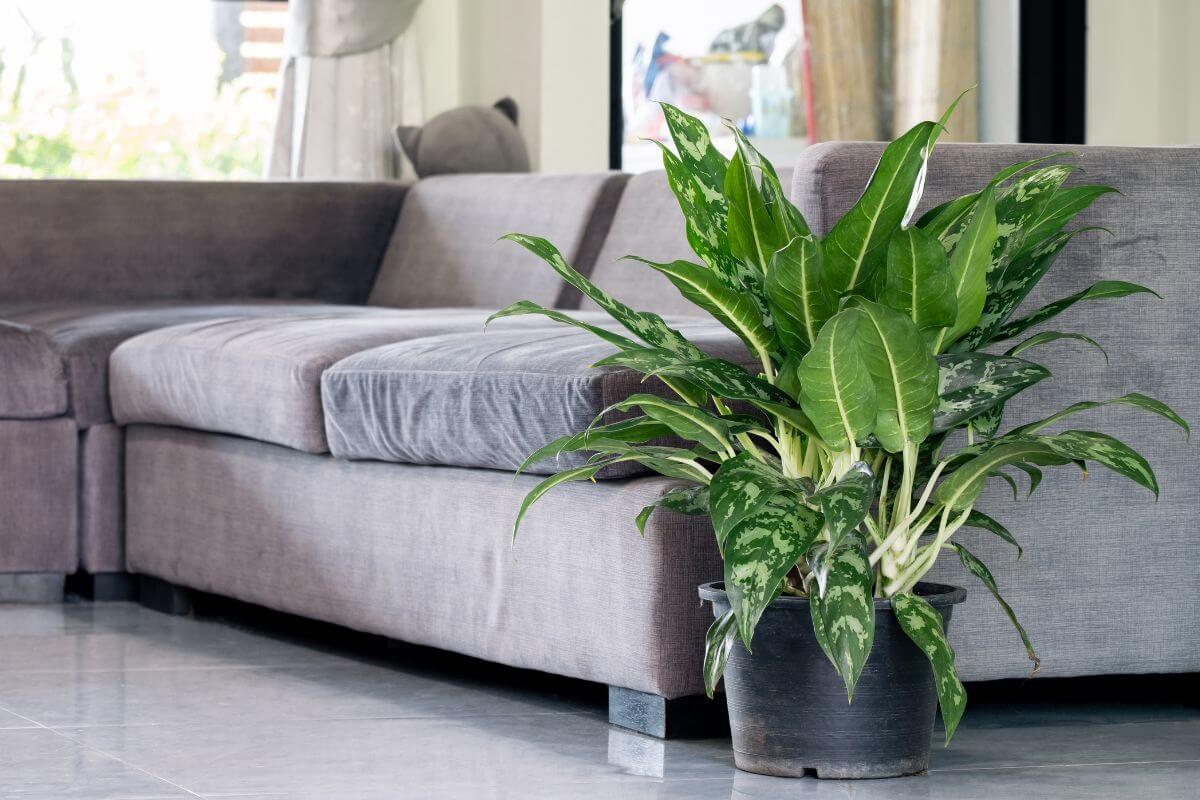
The most favorable indoor temperature will fall between 70° and 72°F for the Chinese Evergreen. Temperatures should never dip below 60° Fahrenheit.
If your windows tend to be cold or drafty, keep the plant away. Cold drafts are bad news for this plant. Drafts will cause the leaves to turn brown.
These plants should also be kept away from air conditioning or heating vents. They should however, be hosted in a warm space.
Fertilization for the Chinese Evergreen
Ideally, your Chinese Evergreen needs to be fed twice a year, at the beginning and end of the growing season.
This can be done with fertilizing pellets that have a slow-release or by using a diluted liquid fertilizer with a ratio of 3-1-2.
Blooming for the Chinese Evergreen
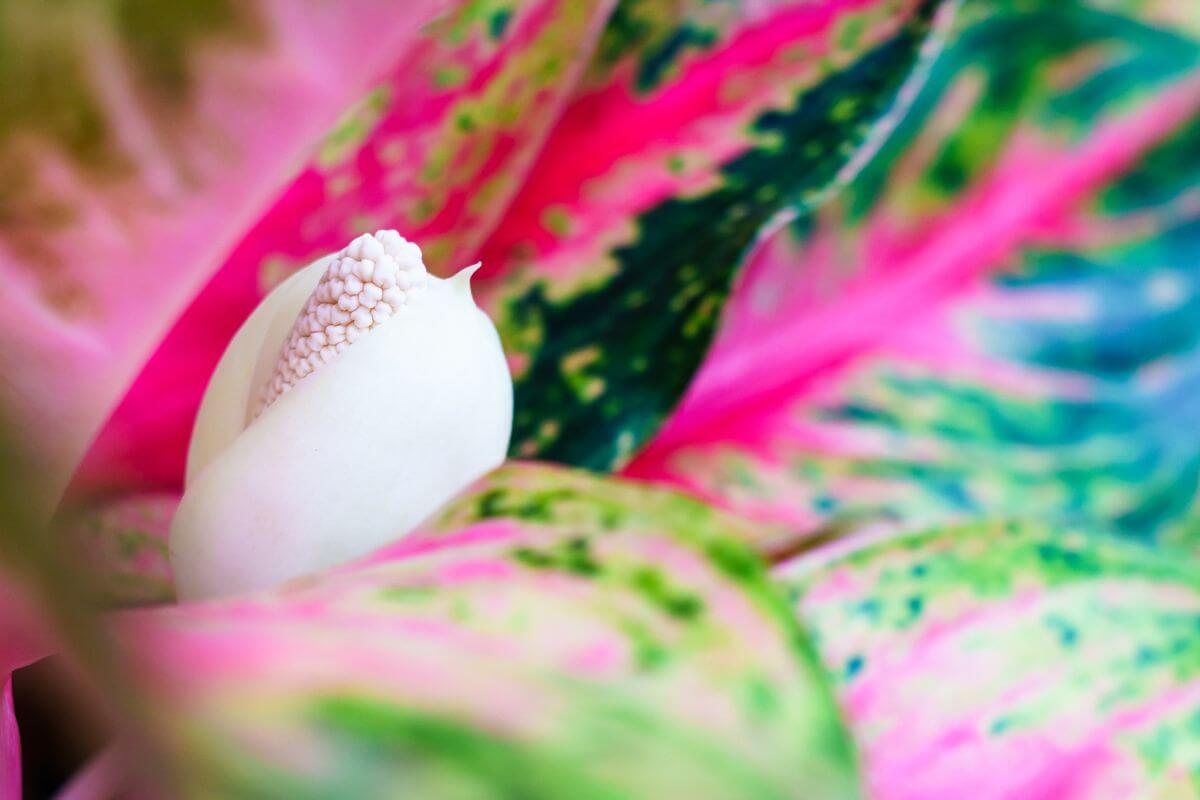
Mature plants will produce white flowers that are similar to lilies in the spring and summer.
The flowers are small and not very showy. Eventually, the flowers will beget berries as well.
Chinese Evergreen Pruning and Repotting
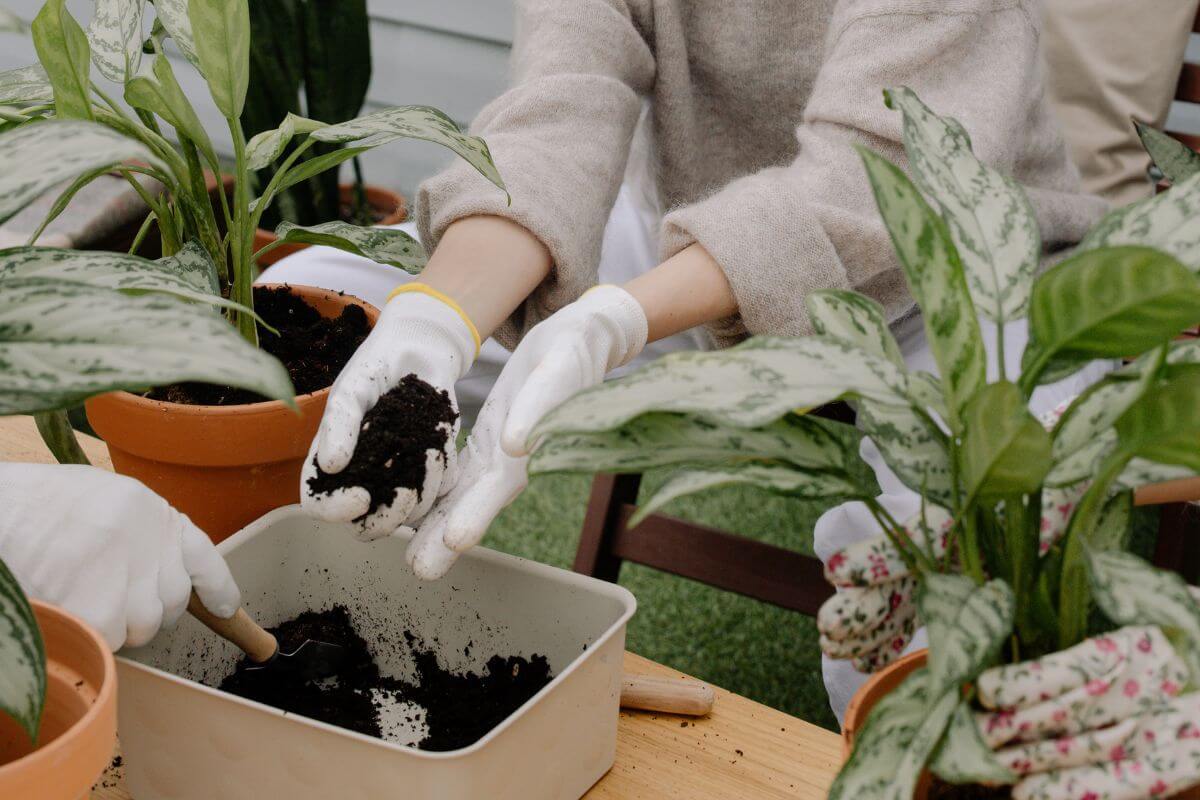
While pruning is not necessary, should your plant begin to look leggy, you can prune it, as well as removing spent blooms.
Repotting should take place in the springtime every other year or every third year. These plants don’t mind being a bit root-bound.
Propagating the Chinese Evergreen
The simplest method for propagating a Chinese Evergreen is by division when it comes time to repot your plant. Another method is to use a stem cutting.
With stem cuttings, it is wise to wait until the middle of summer when the weather is hot. Choose a stem cutting from the mother plant that is several inches in length.
Prepare a new container with potting soil that has been treated with root hormone. Place the cut end of the stem into the soil and keep the soil bed moist.
Within approximately a month, your new Chinese Evergreen plant should take root. Cuttings can also take root in water, but it’s slower.
Chinese Evergreen Toxicity and Pets
The Chinese Evergreen is not a plant for your home if you have curious house pets. It is indeed considered toxic to both cats and dogs, as well as horses because the entire plant contains calcium oxalate crystals.
If a pet bites a leaf, the oxalate crystals will be released and irritate the mouth causing it to swell. This can happen in the throat and gastrointestinal tract, too.
Sometimes extreme swelling may cause the upper airway to close partially or to close making breathing extremely difficult if not impossible. Prevention is the best solution.
Keep your Chinese Evergreen away from domestic pets. Should they bite, chew or ingest this plant, contact your local poison control unit, or your veterinarian immediately.
Symptoms of oxalate crystal poisoning that you may see:
- Swelling
- Diarrhea
- Excessive drooling
- Blistering inside the mouth or in the throat
- Lack of appetite
- Nausea
- Pain in the mouth or throat
- Vomiting
As the taste of the plant is quite bitter, many pets will not take a second bite, limiting the damage to a localized reaction.
Chinese Evergreen Pests, Diseases, Problems, and More
The Chinese Evergreen plant is not particularly susceptible to pest infestations, but can still face typical houseplant pests such as aphids, mealybugs, scale insects, or spider mites.
For organic pest control treatments, turn to insecticidal soaps or use neem oil.
A common disease for the Chinese Evergreen is root rot due to overwatering. Be sure to get well-draining soil and pots with drainage holes.
Bacterial infections to be on the alert for include Erwinia and Xanthomonas.
Considering that the foliage is quite large, leaves should be cleaned occasionally by wiping with a damp rag to prevent dust from clogging pores. You can also put them in your shower and give them a quick spray.
Growing Chinese Evergreen Final Thoughts
The Chinese Evergreen is a hardy plant and can tolerate dry air, poor light, and even some drought. However, if you want it to thrive, a little attention can go a long way. You will be rewarded with its magnificent foliage.
For other houseplant articles, check out these care and grow guides:
Growing Chinese Evergreen FAQs
How much light does a Chinese Evergreen need?
The Chinese Evergreen needs bright, indirect light. The darker the leaves, the less light it will need. The brighter and more variegated the leaves, the more sunlight it needs.
How often do you water a Chinese Evergreen?
Look to water the Chinese Evergreen once every week during the spring, summer, and fall months when temperatures are above 75°F. Don’t allow the soil bed to dry out, but be careful not to overwater either as that can lead to root rot.
Does Chinese Evergreen clean air?
Yes! Chinese Evergreen plants absorb carbon dioxide and other toxins, and release oxygen into the air. It’s one of the best houseplants to help clean and purify the air.
How tall does a Chinese Evergreen get?
Chinese Evergreen plants typically reach about two to three feet high. Its leaves can grow to two feet long.
What kind of care does a Chinese Evergreen require?
With the Chinese Evergreen, keep an eye on watering requirements because they like plenty of moisture. They don’t like being overwatered though; just enough to maintain good growth without causing roots to rot. Keep the potting mix moist at all times.
Do Chinese Evergreens like being misted?
The Chinese Evergreen likes humidity, so if you live in a dry climate, you can mist it to help keep it moist. It’s best to first see if the soil is dry and water the soil, rather than misting the leaves immediately.
Is the Chinese Evergreen poisonous?
Yes, the Chinese Evergreen is poisonous as it contains calcium oxalate crystals. If your pets accidentally ingest any part of the plant, go to the veterinarian immediately. Symptoms can include swelling, diarrhea, vomiting, and excessive drooling.
Why do Chinese Evergreens turn yellow?
Yellow leaves are a common symptom of plant stress. Chinese Evergreens may be affected by many different factors, including overwatering, not enough light, pests, or age.


